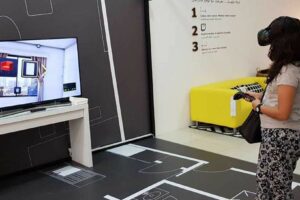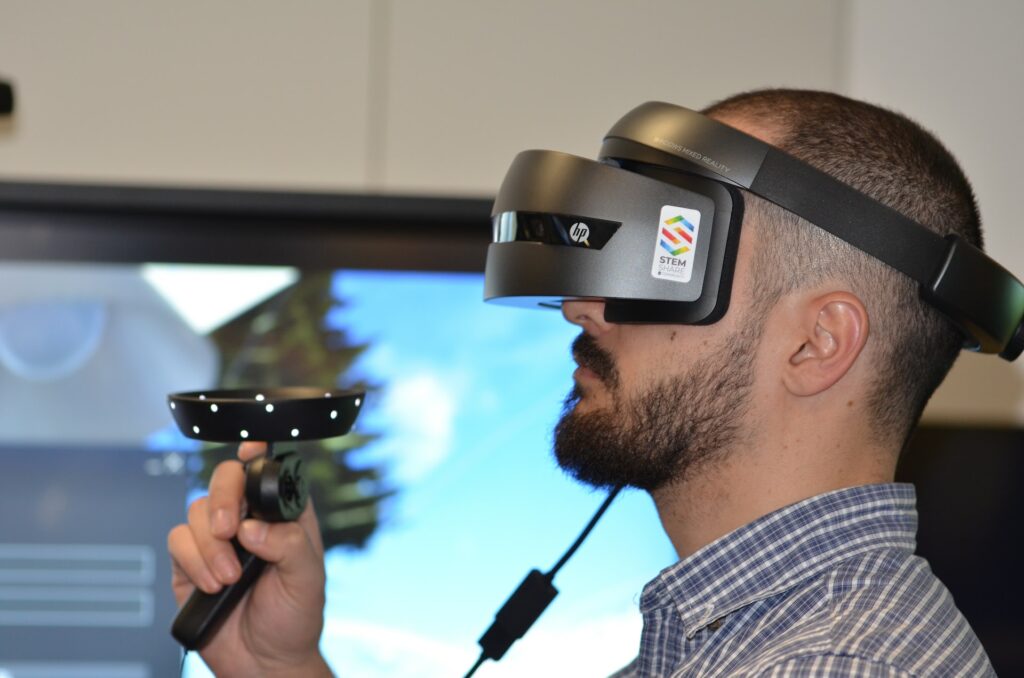In the realm of technology, few trends have sparked as much intrigue as virtual reality (VR). It’s a domain that’s constantly evolving, pushing the boundaries of our sensory experiences and transforming how we interact with the digital world. This article dives deep into the exciting sphere of VR innovations, shedding light on the latest advancements that are shaping the future of this industry.
From immersive gaming to advanced medical training, VR’s potential is vast and all-encompassing. It’s not just about escapism or entertainment anymore. With each innovation, VR is becoming an integral part of our daily lives, revolutionizing sectors one headset at a time. So, let’s embark on this journey to understand the cutting-edge innovations that are propelling VR into uncharted territories.
Virtual Reality Innovations
Virtual reality gains traction, steering trends across numerous industries. Its journey, rooted in entertainment and gaming, has pivoted towards more diverse applications. It’s now integral in fields such as medical training and architectural visualization.
Medical Training Revolution with Virtual Reality

Medical training epitomizes the innovative use of VR technology. Surgical simulations, for instance, increase the skill set of healthcare professionals. These immersive scenarios create a conducive environment for practicing, without possible harm to actual patients. A key example is the Fundamental Surgery platform. Developed by Fundamental VR, it offers a range of interactive training modules in orthopedic surgery. It’s extensive use marks a significant stride in the healthcare industry.
Virtual Reality in Architecture and Construction
Architectural visualization employs VR to its advantage. It eases design communication between architects and clients, providing a 3D walkthrough of planned spaces. An application such as the IrisVR, which enables a seamless transition from 2D plans and blueprints to immersive 3D models, stands as a testament to VR’s influence in construction and design. Clients gain a better sense of the project, fostering decision-making and minimizing costly change requests.
Virtual Reality Gaming Breakthroughs
In the gaming universe, VR continues its reign. Innovative games, from Beat Saber to The Walking Dead: Saints and Sinners, affirm VR technology’s central role in modern gaming. These games illustrate the capacity of VR to plunge players into immersive environments and intense situations. The industry savors the thrill and competitive edge that VR offers.
Enhancing Remote Work with Virtual Reality

In the face of the global pandemic, VR has evolved as a valid solution for remote work challenges. Platforms like Spatial utilize VR to foster collaborative, virtual environments that simulate physical office spaces. Employees achieve a sense of presence, unity, and engagement. VR’s role in remote work underscores its adaptability, transforming barriers into operational solutions.
Virtual reality is not a passing trend. The scope and practicality of VR innovations extend beyond imagination. These examples serve as markers of its versatility, confirming its promise for the future.
Progress in VR Headsets
Building on the transformative potential of VR discussed earlier, we delve into the specifics of VR headset progression. This section illuminates advances in display technology and the evolution of controller systems.
Advanced Display Technology in VR Headsets
Digital display technology for VR headsets has seen significant evolution over the years. Initially, VR headsets exhibited low resolution, high latency, and limited field of view. With advances in display technology though, they’ve moved toward higher resolutions, faster refresh rates, and expanded fields of view, enhancing the overall VR experience.
Limitless Opportunities

Virtual reality’s transformative potential is undeniable. It’s already revolutionizing industries like medical training, architecture, gaming, and remote work. With anticipated advancements such as haptic feedback, next-gen optics, and AI integration, VR experiences are set to become even more immersive and realistic. It’s not just limited to the sectors already leveraging it. Retail, real estate, and tourism are just a few of the many sectors that could greatly benefit from VR adoption. The future of VR is bright, offering enhanced consumer experiences and opening new dimensions in virtual travel. As we continue to innovate and push the boundaries of this technology, one can only imagine what the future holds. Virtual reality is not just a trend, it’s a game-changer that’s here to stay.



